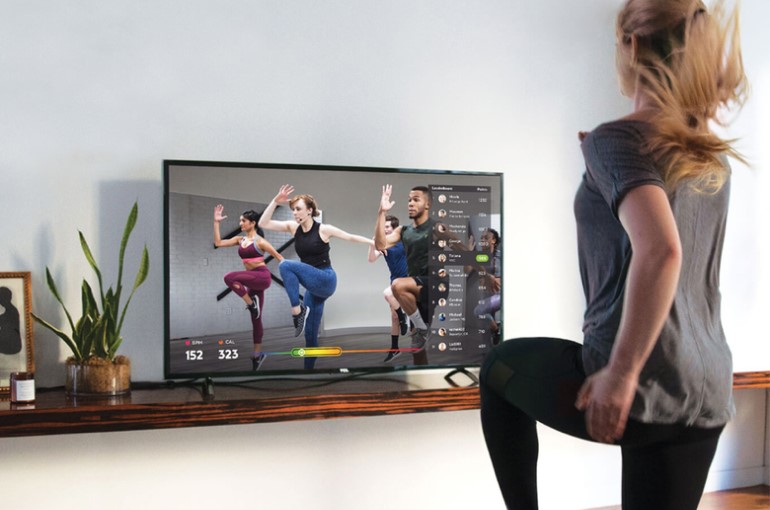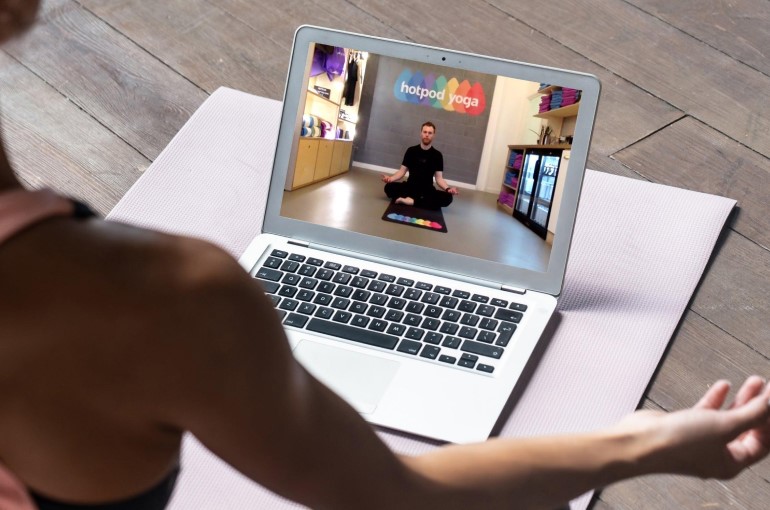How Fitness Industry is Responding to Coronavirus with Fitness Course Online
Fitness is a $34 billion industry, with gym subscriptions, athletic apparel and fitness monitors all making up the lucrative sector, and an evaluated 20 percent of Americans have a membership to some kind of fitness club, according to the International Health, Racquet & Sports club Association (IHRSA).
Whilst the coronavirus pandemic sweeps the United States, many industries have stumbled into a downward spiral as the emerging uncertainty drives U.S market shares to descend. Industries once flourished such as airlines, oil, automobiles, and tourism have taken massive hits by the impacts of COVID-19 pandemic. Meanwhile, companies supplying things like gym equipment are endeavoring to meet a skyrocketing demand. Notwithstanding, the fitness industry has experienced its fair share of economic turbulence as governments mandate the closure of all non-essential public places, including gyms, and implement shelter-in-place policies to U.S residents. Even though many health clubs have taken the brunt of it, a few have struggled to devise innovative and cunning strategies to remain relevant and make that leap from severe downturn.
As their workout spaces shut their doors, a number of them turned to their phones or laptops, then the audience for online fitness has accelerated. The pandemic has phenomenally augmented the addressable market for virtual fitness offerings and also forced traditional gyms to move into offering more virtual products for at-home workouts. Moreover, the pandemic has raised awareness of the health benefits of working out.
On the other hand, several companies were prepared for the prolonged closure of gyms this past month, many brands have deployed this time to push the boundaries of what the fitness industry can deliver through an online platform. The improvement of fitness content, accessibility, and online support are just a few silver linings that have accompanied these trying times.
The pandemic shut down gyms and fitness studios, and urged coaches, trainers, and teachers across the U.S to take their livelihood online, many for the first time. Clients with precipitously changed schedules and budgets found themselves making adaptations of their own. Centralized digital platforms—some designed by gym companies—have skyrocketed, and now they have an opening to turn fitness into the same kind of collective, homogenized experience that league sports, office life, movies and television, dating, and video games.
Emancipated from the encumbrances of physical infrastructure, fitness can happen in everywhere which gym enthusiasts can take. In the short term, the costs and benefits are flying every which way. Throughout the time, the options gym enthusiasts have for working out—and the options they do not—are likely to settle into something very different from what they might have expected only a few months ago, and to do so faster and under greater pressure than they would have without the coronavirus.
This article will elucidate how ClassPass brings back live-streamed workout classes to help fitness industry survive the pandemic and the emerging of fitness course online from a stay-home coach to reach audience and make livelihood.
How ClassPass is Ramping Up Digital Opportunities to Make Up for Coronavirus Fallout?
ClassPass is an American company which provides affordable access to different fitness classes such as yoga, strength training, barre, martial arts, Pilates, boxing, and indoor cycling classes, as well as use of health clubs via its flat-rate monthly subscription billing service. ClassPass has been officially executed by CEO and major investor Fritz Lanman since March 2017 and is the world’s largest health club aggregator by number of club partnerships, with approximately 30,000 health clubs in 28 countries across the globe.

Across the U.S, as millions of people are being asked to stay home to flatten the Covid-19 curve, American fitness studios and gyms are being forced to shut down. Many of these studios are streamlined by small and medium-sized business owners who may not be able to afford rent or maintain their employees while prolonged shutdown, henceforth ClassPass, the worldwide leading fitness platform, is taking efforts into their own hands to help the fitness industry outlast the pandemic.
Beyond any doubt, it is an unprecedented challenge that wellness industry is experiencing. ClassPass platform has been hit hard as its booking fitness and wellness appointments cannot function very well if there are no classes being offered. Almost 90 percent of the 30,000 gyms and studios that ClassPass has partnered with in 30 countries, have indefinitely closed their physical locations. The company has a few advantages though, because as a global corporation it had a front row seat. ClassPass, which has raised more than $500 million, is well capitalized to cope with the shelter-in-place incentives and economic fallout. Nevertheless, the company’s success relies on the health of its partners, so it is taking efforts into its own hands to help the fitness industry survive the pandemic. In response to COVID-19, ClassPass has cut down on its reactivation fees, has made it possible that members pause their memberships and scaled its customer services team for more support.
ClassPass was running on its digital presence vision a couple of years ago. The company launched a live video streaming product called ClassPass Live for the first time in March of 2018 with a full broadcasting studio in Brooklyn. To be able to have access to it users had to have a new subscription specifically to the online workout repository. ClassPass Live eventually was halted when the company reorganized its priorities. However, thousands of workouts from that product have remained on the app for subscribers as an on-demand workout from home option. Those 2,000 video and audio workouts are now available for free to anyone who is signed in to the ClassPass app.

ClassPass studio partners are able to offer live streamed classes on the platform. The company system allows the studios to set their own prices, date and time, and share a link to the streaming platform of their choice for their class. Through June 1, 2020, one hundred percent of the proceeds will go directly to the studios and fitness instructors due to COVID-19. For partners that are hosting online classes for the first time, ClassPass will offer training and resources on best practices and help them get started through the platform. The company has also created a Partner Relief Fund, where people can donate to their favorite studios directly through the app. ClassPass will match all contributions up to $1 million.
ClassPass has followed a cunning strategy as a silver bullet for innovating and correlating with more partners and clients. First of all, they chose to fully support their partners and customers and prioritized to help them instead of pocketing the money for their finances. This will help more studios be on the platform after the pandemic is over and increase the positive correlation to the brand name. There will be more customers choosing ClassPass because of how easy it was to deal with the membership if they want to cancel or roll over and how easy it is to reach customer service. Secondly, they joined forces with other players in the industry to petition to the government. The more coalition there is, the higher are the chances of the government alleviating the companies in turmoil. Thirdly, they put into use whatever content they had digital and offered it for free. On the top of that created a system where each partner can stream live any workout in any platform they want. The partners can also decide on the structure and the payments.

It is estimated that the primary business post COVID-19 for ClassPass will never be online because the real-world experience is difficult to be experienced digitally, that is another reason why the online workout videos unveiled in 2018 were not that successful. However, in the future, people will want some offline offerings across a variety of things and some of the brick-and-mortar fitness industry will disappear. In an already crowded industry, the coronavirus will set the successful apart from the mediocre.
From Bricks to Clicks: New Ways to Reach Out Audience Amid the Closure of Fitness Studios?
It is a disquieting time for the brick-and-mortar fitness companies across the U.S, with the majority of gyms forced to indefinitely close their doors. Many will undoubtedly suffer financial implications. However, the silver lining is that it can be possible for gyms to offer services to customers at home through digital channels, and many are now doing their best to create opportunities for online customers where possible.

Amid the coronavirus outbreak, digital fitness brands have found themselves in a more fortunate position than their brick-and-mortar counterparts. This is because they are already equipped to offer remote fitness to customers, and have naturally seen an uptick in demand as a result of people being prevented from working out in-person
Furthermore, fortunately, social media makes video streaming an easy option, with Joe Wicks being an example that many are trying to follow. British instructor Joe Wicks spent years growing his social media presence. Currently, he has exceeding 10 million followers and regularly gets hundreds of thousands of views for his free workouts on YouTube, which earn money from advertising. Since Joe embarked on running daily PE classes for children who are home-schooling, those figures are now in the millions.
“You need to have another offering. So definitely think about a digital product, whether it’s a PDF, a recipe guide, an app. You can do low maintenance things that can generate a revenue that can keep you going.” shared by Wicks.
In emerging live video streaming flow, US gym chain, Planet Fitness, is offering free workouts for a period of two weeks, streamed on its Facebook and YouTube channels. Out of the gyms that are yet to experiment with digital solutions, the majority have frozen customers’ membership fees, in the hope that they will be able to reopen again in the summer. If lockdowns continue, however, it could be the case that more investments in digital solutions during the interim might be happened.
The Bottom Line
Before the pandemic, digital fitness was already a growing market, and many feared that it would replace the physical need for gyms and studios altogether. Notwithstanding, it is once believed that digital fitness is for several consumers, a supplement, something that compliments a gym membership, rather than replaces it. Currently, this is even more true for the future of the fitness industry, where the new normal is reflected to reflect a combination of both digital and real-life services from gyms and studios.
Digital fitness has quickly become the savior of the industry as more people grow accustomed to it, then this will alter the way members engage with gyms and studios. Throughout lockdown, some may have started using fitness apps offered by digital fitness firms and watching online video on YouTube to work out at home. And once people are used to them, they get into the habit of following these apps and videos to work out and they like being able to see it.
Undeniably, online workouts have been providing people with structure, fitness, a sense of community, and socializing. They have been keeping people sane and healthy. Online workouts are here to stay as consumers will expect a hybrid offering in the future. While long-term, many will return to their usual in-studio routine, a gym that also offers online workouts will be even more accessible to members.
This shift will influence the way fitness companies communicate and engage with their customers, as well as the services they offer. However, as long as they can keep up with the trends and stay a step ahead, their studio will always be able to anticipate, meet the needs of their customers.









